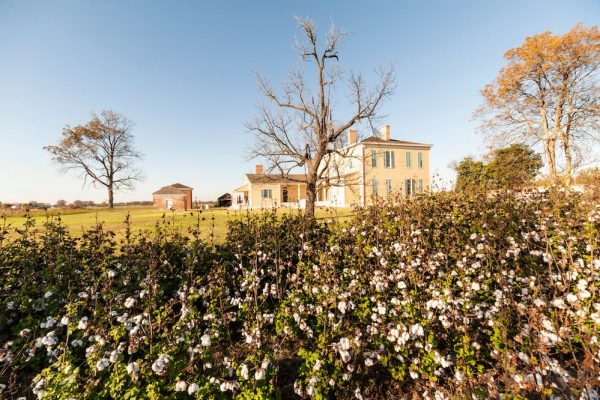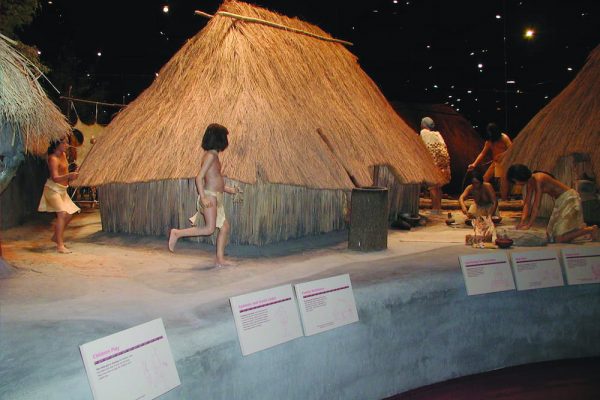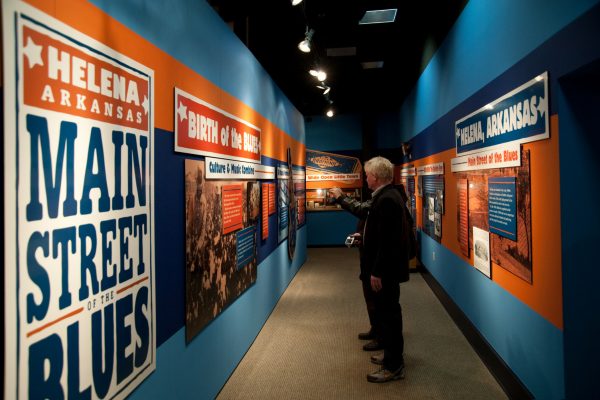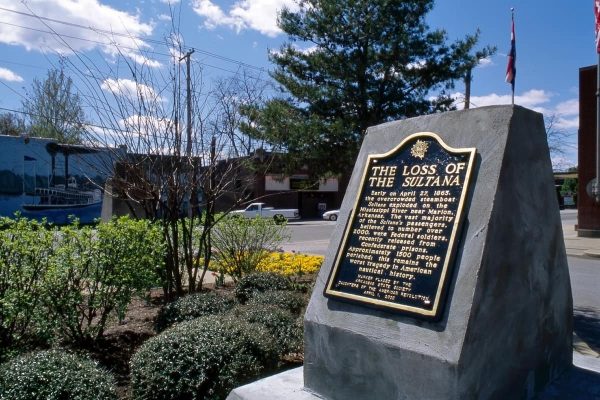To travel the Great River Road is to travel through the history of the people and cultures of the Mississippi River. Marvel at a once-massive ancient city created by the mound-building people of southern Illinois, see the agricultural settlement where a young Johnny Cash spent his formative years, and learn about an important battle in Civil War history.
Reminder: Local and state safety regulations may lead to reduced hours or changes in operations. Please contact specific businesses or attractions for more information before you visit.
Lakeport Planation
Built in 1859, Lakeport Plantation sits just a short distance from the banks of the Mississippi River in Lake Village, Arkansas. It’s the last remaining Mississippi River plantation home in Arkansas and is considered one of the state’s top historic structures. Exhibits in the home tell the stories of the people who lived and worked on the plantation, as well as how the home was restored to its original condition. Tours are available Monday through Friday year-round and also on Saturdays in the winter.
Learn more.
Cahokia Mounds State Historic Site
Drive to Collinsville, Illinois—just across the Mississippi River from St. Louis—and you’ll find one of the two UNESCO World Heritage Sites along the Great River Road. Cahokia Mounds was inhabited for about 700 years from 700 to 1400 AD, and it its peak, was home to 10,000 to 20,000 people. The inhabitants built more than 120 mounds on the site, which covers more than 6 square miles. An interpretive center and tours help visitors learn more about this fascinating site.
Learn more.
Historic Dyess Colony
The Dyess Colony in northeastern Arkansas was created as a federal agricultural settlement as part of the New Deal in 1934, giving a new start to hundreds of poor farming families in the state. One of those families, the Cashes had a son, Johnny, who went on to become one of the most notable names in American music. Several of the colony’s buildings have been restored and are open to visitors, including the Johnny Cash Boyhood home.
Learn more.

Columbus-Belmont State Park
This 156-acre site in Kentucky is the site of a Confederate fortification, and the Battle of Belmont—fought here in 1861—marked the beginning of the Union’s Western campaign. The battle for the fort, which had blocked the Union forces looking to travel south on the Mississippi River, was the first real action for Union Brigadier General Ulysses S. Grant. The site is also home to a Civil War Museum, and visitors can see the massive chain and anchor that was meant to prevent Union ships from passing.
Learn more.
Delta Cultural Center
The Arkansas Delta has made immense contributions to American culture, blues music and more—hear the stories of Delta residents at the Delta Cultural Center in Helena, Arkansas. Exhibits and guided tours educate visitors about the people and history of this region. The Delta Cultural Center is also home to “King Biscuit Time,” a live daily blues broadcast that has been on the air for nearly 80 years.
Learn more.
Wickliffe Mounds State Historic Site
Discover the history of the Mississippian—or mound-building—native culture that called this area home at Wickliffe Mounds State Historic Site in Kentucky. This site was home to a Native American village from about 1100 to 1350, and visitors to the historic site can walk interpretive archaeological trails, learn about the culture that lived here and see artifacts and tools at the Wickliffe Mounds museum, which has been open to the public since 1932.
Learn more.
Fort de Chartres State Historic Site
This French fort was constructed nearly 300 years ago on the Illinois side of the Mississippi River, south of St. Louis. It served as a base for French soldiers during their occupation of what is today Illinois.. Interpretive signage guides visitors around the site, and on weekends, costumed interpreters offer additional information and reenactments.
Learn more.
Fort Jefferson Hill Park and Memorial Cross
Fort Jefferson was established in 1780 on a hill overlooking the Mississippi River a mile south of the present-day city of Wickliffe, Kentucky. The fort, which was only occupied for a short time, was intended to protect the western border of the then-newfound United States. The cross towers 95 feet high above the confluence of the Mississippi and Ohio rivers andcan be seen from three states. Fort Jefferson is also a Lewis and Clark Expedition historic site.
Learn more.
Sultana Disaster Museum
The greatest maritime disaster in U.S. history occurred on the Mississippi River in Arkansas in 1865. The Sultana, a Civil War-era steamboat, exploded on April 27, 1865, killing more than 1,200 people aboard. Among the dead were Union soldiers who had been released from prison camps in Andersonville and Cahaba. Learn about this oft-overlooked disaster at the Sultana Disaster Museum in Marion.
Learn more.











